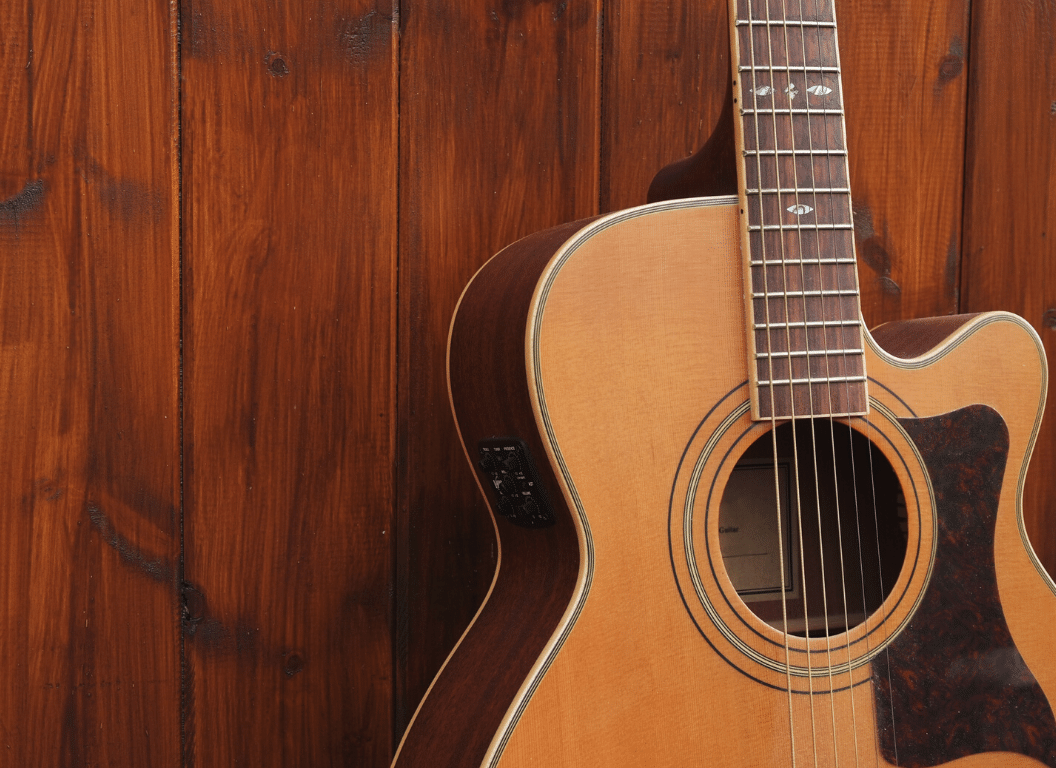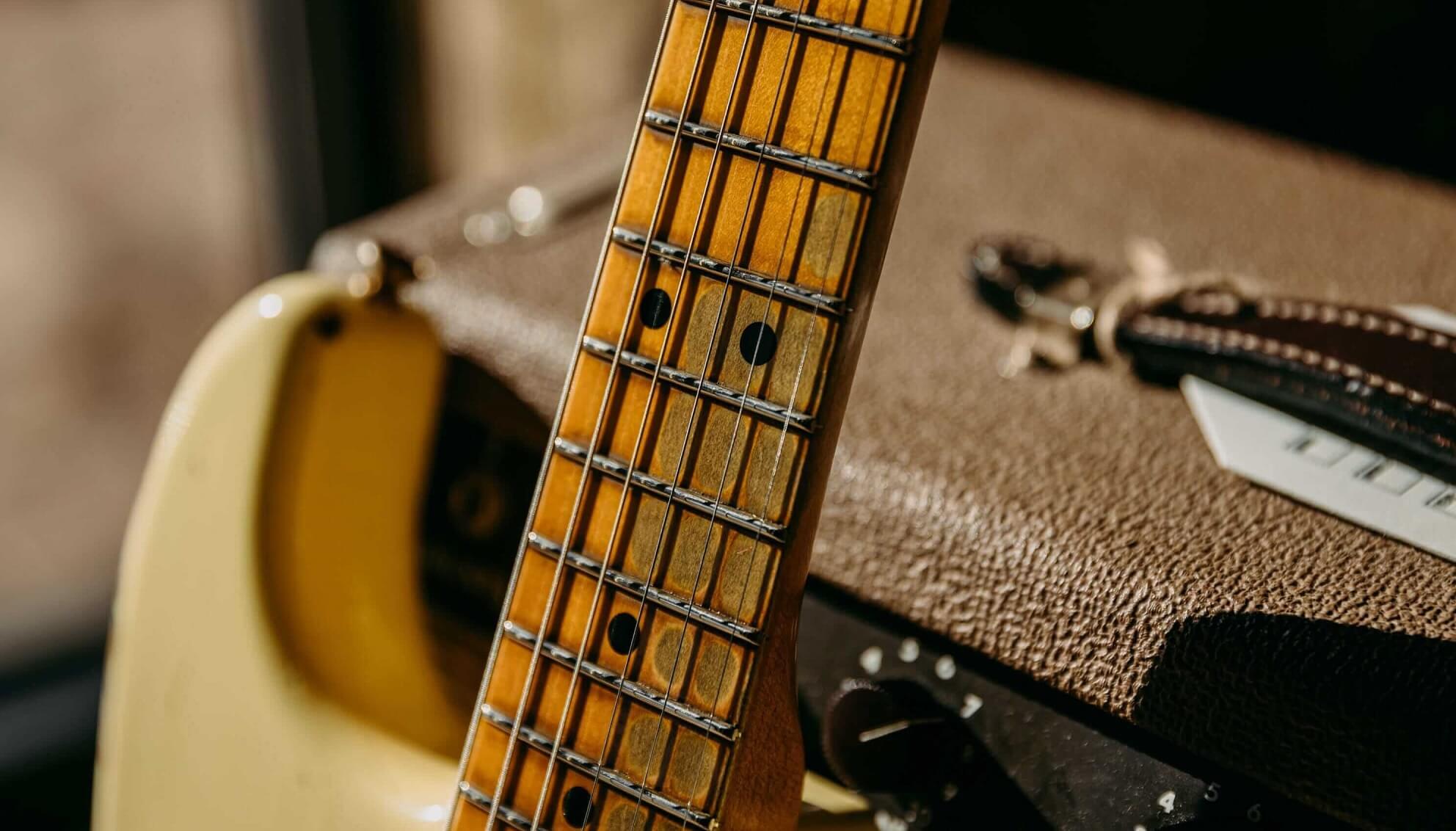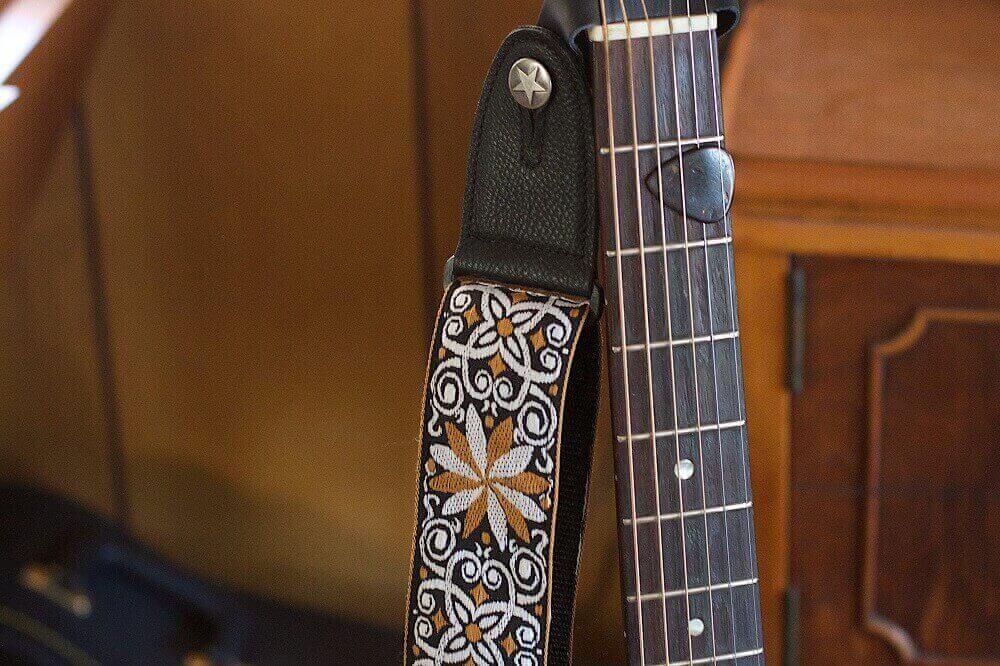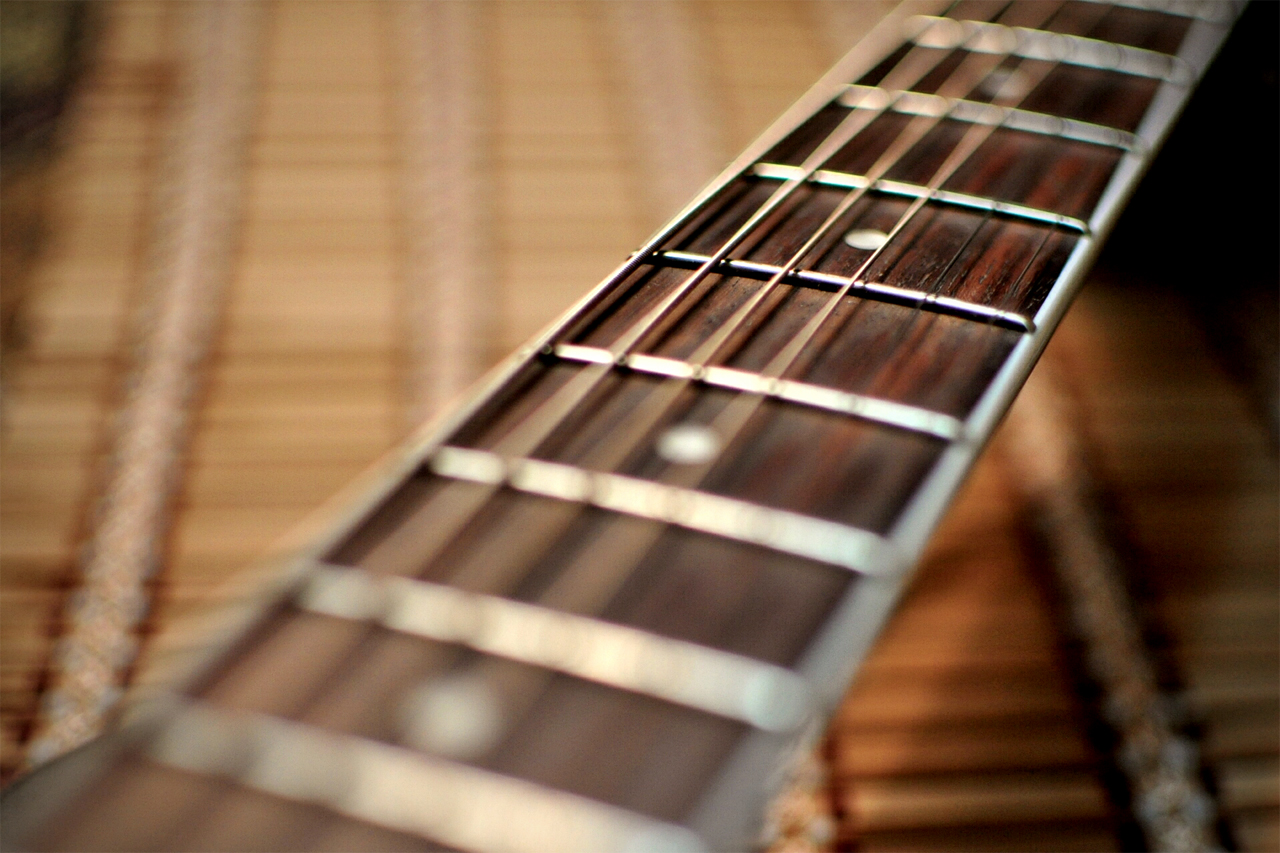For any guitar player, having a guitar that is properly intonated is essential.
Perfect intonation ensures that the guitar sounds accurately in tune across the entirety of the fretboard.
Sadly, this fundamental aspect is often overlooked by many.
With an improperly intonated guitar, your chords and notes can sound discordant or off, especially as you move up the fretboard.
Happily, this is an issue you can remedy yourself with a bit of knowledge and care.
In this post, we’re going to delve deeply into the process of adjusting your guitar’s intonation.
Table of Contents
- How To Adjust The Intonation On Your Guitar?
- How Important Is It To Correct Your Guitar Intonation?
- What Tools Will You Need for Adjusting the Guitar Intonation?
- Step-by-Step Guide to Adjusting Your Guitar’s Intonation
- Common Mistakes to Avoid When Adjusting Intonation
- Does String Gauge Have Any Impact on Guitar Intonation?
- Is Your Guitar’s Action Affecting Its Intonation?
- How Often To Check and Adjust Your Guitar’s Intonation?
- Intonation Adjustments for Advanced Players
- The Bottom Line
How To Adjust The Intonation On Your Guitar?
Adjusting the intonation on your guitar involves fine-tuning the strings to ensure they produce accurate pitches across the fretboard. This can be achieved by using an electronic tuner and adjusting the string’s length by moving the saddle forward or backward based on the tuner’s readings. The process is carried out for each string sequentially, ensuring they all resonate accurately at the 12th fret and open string.
While this establishes the basic procedure for adjusting intonation, it’s also crucial to comprehend associated vital aspects to get the most out of your instrument.
As we delve deeper into the subject, we’ll explore such related topics as understanding the mechanics of bridge adjustment for different types of guitars, common issues and solutions to guitar intonation, and the role of string gauge and action in intonation.
All of which can hugely impact the overall sound, playability and consistency of your instrument.
We hope that this comprehensive insight will not only aid you in fine-tuning your guitar but also deepen your appreciation and understanding of music instrument mechanics.
So, keep reading to not only better play your guitar but also maintain its longevity.
How Important Is It To Correct Your Guitar Intonation?
When it comes to playing the guitar, intonation can make or break the overall quality and beauty of the sound produced.
As an integral part of mastering the art of playing this beloved string instrument, understanding the concept and importance of correct guitar intonation cannot be underestimated.
Put simply, guitar intonation refers to the instrument’s ability to stay in tune along the entirety of the fretboard.
This means that no matter where you are playing on the fretboard, the notes should ring true and in tune.
Good intonation is, in essence, a prerequisite for expressing ourselves musically on the guitar.
It provides the base needed to play melodies, harmonies, and chords accurately.
Without it, even the most complex and beautiful musical pieces can sound discordant and off.
“Good intonation provides the base needed to play melodies, harmonies, and chords accurately.”
As intonation impacts every single note played on the guitar, simply put, it is the foundation of your guitar’s voice.
Having a guitar with good intonation contributes not only to a better guitar playing experience, but also a more satisfying listener experience.
Fine-tuning your guitar’s intonation can seem like a challenging task, especially if you are new to the concept.
It’s a process that involves some necessary steps and tools, also a solid understanding of how your guitar works.
It’s worth noting that while intonation can be adjusted, it’s never quite perfect – a trait inherent in the design of the guitar itself.
Nonetheless, every effort to enhance intonation will pay dividends when it comes to the overall sound and playability of your instrument.
Not only does good intonation enhance the sound quality of your guitar, but it also plays a crucial role in helping you advance your guitar skills.
Without correct intonation, you may find yourself constantly adjusting your fingers or strumming techniques, trying to compensate for a guitar that just doesn’t sound right.
On the other hand, a guitar with good intonation allows you to focus more on improving your playing technique and exploring new musical styles.
Additionally, recognizing when your guitar’s intonation is off is a valuable skill.
This not only helps in maintaining your guitar’s sound quality but also further deepens your understanding of your instrument.
It is, therefore, essential to regularly check and adjust your guitar’s intonation, and if need be, seek professional help.
To assist you on this crucial aspect of guitar maintenance, we’ve included a useful resource.
Feel free to check out the embedded video below:
By watching this video, you might gain a deeper insight into the process of adjusting guitar intonation and pick up some valuable tips on how to do it correctly and effectively.
What Tools Will You Need for Adjusting the Guitar Intonation?
Before you can begin the process of adjusting your guitar’s intonation, you’ll need to gather the correct tools for the job.
Guitar Tuner
The first and most important tool you’ll need is a guitar tuner.
A guitar tuner is a device that helps you ensure each string of your guitar is in the correct pitch.
Without this tool, it would be almost impossible to correct your guitar’s intonation accurately.
There are many types of guitar tuners, but most professionals recommend chromatic tuners for intonation work due to their precision.
A guitar tuner is a device that helps you ensure each string of your guitar is in the correct pitch.
As the statement suggests, a guitar tuner is a crucial tool for adjusting intonation.
Its role in helping you establish the correct pitch of each string cannot be understated.
A chromatic tuner is especially recommended due to its precision.
Screwdriver and Allen Wrench
The second set of tools you’ll need are a screwdriver and an allen wrench.
These are used to adjust the bridge saddles of the guitar which change the length of the strings, thus altering the intonation.
Each type of guitar requires different tools; for instance, Fender-style guitars typically need a small screwdriver while Gibson-style guitars require an allen wrench.
Therefore, it’s essential to know your guitar’s requirements before commencement.
“The second set of tools you’ll need are a screwdriver and an allen wrench.”
This emphasises the need for physical tools alongside the guitar tuner to adjust the bridge saddles of the guitar.
Understanding the specific requirements of your guitar, whether it be a Fender-style or Gibson-style, can ensure a smooth intonation adjusting process.
Step-by-Step Guide to Adjusting Your Guitar’s Intonation
Step 1: Tune Your Guitar
The first step in adjusting your guitar’s intonation is to tune your guitar.
You can use the guitar tuner for this process.
Ensure that each string is tuned to its standard pitch before moving onto the next step.
Step 2: Check the Intonation
The next step is to check the intonation to see if it needs adjustment.
You check this by playing the 12th fret harmonic on each string and comparing the pitch with the fretted 12th note.
If there is a difference in pitch, your guitar’s intonation needs adjustment.
“You check this by playing the 12th fret harmonic on each string and comparing the pitch with the fretted 12th note.”
Comparing the pitch between the 12th fret harmonic and the fretted 12th note is a practical method to check the intonation.
If any difference in pitch is detected, it indicates a need for adjusting the guitar’s intonation.
Step 3: Adjust the Intonation
The final step in the process is to adjust the intonation.
This is done by adjusting the bridge saddles on your guitar using the screwdriver or an allen wrench.
If the fretted note is sharper than the harmonic, you need to lengthen the string length by moving the saddle back.
If it’s flatter, you need to shorten the string length by moving the saddle forward.
Common Mistakes to Avoid When Adjusting Intonation
Adjusting the intonation of your guitar is a fundamental skill that most guitarists must master to ensure their instrument stays in tune.
However, it’s also a process that can lead to a number of common mistakes if not done correctly.
Ignoring the Importance of a Well-Tuned Guitar
One of the biggest mistakes to avoid is not understanding the importance of having a well-tuned guitar.
This could lead to a less desirable sound and a less efficient performance.
The sound of your guitar is crucial to your overall performance.
A guitar that is not well tuned can make your music sound out of tune, which can be detrimental to your performance.
A well-tuned guitar maximizes your music’s potential.
To further emphasize, playing on a poorly intoned guitar may not only cause dissonance in the music, but also hinder your ability to learn and progress as a guitarist due to the inherent inaccuracies in fret positioning.
Failing to Use the Right Tools
A common mistake is failing to use the right tools when adjusting guitar intonation.
Poor quality or incorrect tools can potentially damage the guitar’s parts and, consequently, affect the accuracy of your adjustments.
A common mistake is failing to use the right tools when adjusting guitar intonation.
For example, using pliers to adjust the bridge instead of a specialized wrench could strip the bolt or the bridge itself.
That is why having proper tools is critical to making precise adjustments and preserving the instrument integrity.
Rushing the Process
Many guitarists make the mistake of rushing the intonation adjustment process.
Adjusting guitar’s intonation is a delicate operation that requires patience and precision to be done accurately.
Rushing the adjustment process can lead to inaccuracies in the guitar intonation.
It’s recommended that one takes their time to make small, incremental adjustments and continually check the tuning after each adjustment.
This methodical approach ensures that the guitar’s sound is perfectly dialed in.
Not Considering String Age
An essential factor to keep in mind is the age and condition of your strings.
Adjusting the intonation of old, worn-out strings is a common mistake.
String age and combined wear can significantly impact the precision of your intonation.
Therefore, it’s always recommended to install fresh strings before making any intonation adjustments.
This will allow for a more accurate setup and ensure that all the efforts put into adjusting the intonation aren’t wasted due to old strings.
Does String Gauge Have Any Impact on Guitar Intonation?
One of the key elements that affect the intonation of your guitar is the string gauge.
This refers to the thickness or diameter of the guitar strings,
which directly impacts the tension of the strings when they’re played.
Lighter strings generate less tension, requiring less pressure to fret and creating a brighter tone,
while heavier strings produce more tension, requiring more pressure to fret and giving a thicker, fuller sound.
Both types of strings deliver different pressures on the fretboard,
which indeed results in various pitch outcomes.
The string gauge plays a significant role in determining the intonation of your guitar, affecting the pressure on the fretboard and pitch of the tune.
Consequently, it is vital to select the suitable string gauge for your style of play,
and ensure that it is compatible with other elements of your guitar setup to provide accurate intonation.
Changing to a different string gauge usually requires a setup adjustment to maintain optimal intonation.
Using heavier strings can alter your guitar’s neck relief (the slight bow in the neck),
due to the increased tension, thus affecting the intonation.
On the contrast, lighter strings might lead to less neck relief, which can also impact the intonation.
Switching to a different string gauge typically calls for a setup adjustment to preserve perfect intonation.
Thus, if you plan on changing your string gauge,
it is highly recommended to check your intonation and make the required adjustments post the change.
Regardless of the string gauge you use, it is important to regularly check and adjust your guitar’s intonation.
This ensures consistent sound quality and keeps your instrument in its best shape for performances.
Overtime, the cumulative effect of playing and changing strings can cause the intonation to wander off its optimum setup.
So keeping a regular check helps you identify these changes early and rectify them promptly.
Regular intonation checks ensure consistent sound quality and maintain your instrument in peak condition for performances.
Get more insights on this topic and learn effective techniques for adjusting your guitar’s intonation by watching this video:
It demonstrates some expert ways of accurately setting up your guitar’s intonation.
It also provides great visual guidance on considering the impact of string gauge on guitar intonation.
As you can see, the string gauge can significantly determine the intonation of your guitar,
and adjusting them without proper understanding can lead to unsatisfactory results.
Hence mastering your understanding of string gauge and its impact on intonation is a crucial aspect of maintaining and enhancing your guitar playing skills.
Is Your Guitar’s Action Affecting Its Intonation?
When discussing guitar intonation, it is crucial to understand the role of guitar action in this process.
Guitar action refers to the height of the strings from the fretboard.
The height of the strings can make a significant difference in playing comfort and intonation.
When the action is too high, it can cause the strings to be played out of tune.
Because the player must press harder, the strings can be stretched too far and this will affect the pitch.
The height of the strings can greatly affect the guitar’s intonation.
Indeed, the height of the strings from the fretboard can cause the guitar’s intonation to be thrown off easily.
When the action is too low, it may result in fret buzz, which will also affect the intonation.
You can adjust the action by raising or lowering the saddle, or the part the strings rest on.
Each guitar is built differently and this process can differ based on the guitar’s design.
You can adjust the guitar’s action by raising or lowering the saddle.
It’s essential to note that adjusting the action can dramatically affect your guitar’s intonation.
Always check your guitar’s intonation after adjusting the action.
While you can do some minor adjustments yourself, it is usually best to consult with a professional.
It is especially true if you are unsure about adjusting the guitar’s action.
It’s usually best to consult with a professional when adjusting the action of your guitar.
If done incorrectly, it can damage your guitar and adversely affect its sound quality and intonation.
A professional luthier or guitar tech can make the necessary adjustments to ensure your guitar is sounding its best and has the right intonation.
It’s important to understand that while action and intonation are closely linked, they are not the same thing.
Good action can ease playability and improve intonation, but it’s not the sole determinant of intonation.
Good action can improve intonation, but it’s not the sole determinant of intonation.
Other parameters such as the quality of the strings, the nature of the hardware, and the condition of the guitar itself also play significant roles in achieving good intonation.
Therefore, in the pursuit of perfect intonation, always take into account all these factors, including guitar action.
How Often To Check and Adjust Your Guitar’s Intonation?
The question of how frequently you should check and adjust your guitar’s intonation is one that many players often overlook, but it shouldn’t be taken lightly.
Regular monitoring of intonation assures that your guitar gives continuous optimal performance, enhancing your playing experience.
While there’s no fixed rule, a good framework to begin with is to check your guitar’s intonation at least once a month.
Doing so gives you the chance to rectify any variations before they can significantly impact the guitar’s sound quality.
Besides, regular checks aid in the early detection of other potential issues, letting you maintain your instrument in top shape.
While there’s no fixed rule, a good framework to begin with is to check your guitar’s intonation at least once a month.
This regular rhythm for intonation checks gives you the security of knowing your guitar is always in its best condition to give you the sound you love.
Furthermore, it helps you to build a habit of fine-tuning your instrument.
Several factors may demand you to check the intonation of your guitar more frequently.
If your guitar undergoes heavy usage or is being used in varied weather and temperature conditions, it might require frequent checking and adjustment.
A more frequently traveled or heavily played guitar could face regular wear and tear, affecting its intonation over time.
This video provides practical visuals to help understand the process of guitar intonation and know why it’s crucial to check it frequently.
Also, you will learn some essential guitar adjustments for maintaining the intonation of your instrument.
Finally, while regular checking is essential, adjustment of guitar intonation should be done as needed.
There is no point to forcing an adjustment if your guitar is already well intonated.
This could lead to unnecessary wear on the instrument.
Understanding when your guitar requires an adjustment is as crucial as knowing how to make the adjustment.
Understanding when your guitar requires an adjustment is as crucial as knowing how to make the adjustment.
If you’re new to guitar playing, you might find detecting the need for adjustment difficult at first.
But, with regular checks and experience, you’ll start to understand your guitar better.
Checking regularly your guitar’s intonation ensures that your guitar is accurately sorted, which results in a great sounding guitar.
Intonation Adjustments for Advanced Players
If you’re an experienced guitarist, you’ll likely have encountered situations where standard intonation adjustments don’t completely solve tuning issues.
This is where advanced intonation adjustments come into play.
Some seasoned players, particularly those performing in live settings, find it necessary to tweak their guitars even further than the standard intonation adjustments to ensure optimal performance.
The 12th Fret Test Has Its Limitations
The common 12th fret test is a fundamental method for adjusting intonation.
But for experienced guitarists who have already mastered this basic technique, they might find it has its limitations.
Applying the 12th fret test, one quickly realizes that while it does correct the intonation for an open string against its octave, it doesn’t necessarily guarantee a perfectly tuned fretboard across all frets.
The 12th fret method shines a light on a broader issue: while the guitar might sound perfectly in tune when playing an open note and its corresponding 12th fret, the intermediate frets can still sound slightly off.
The 12th fret method shines a light on a broader issue: while the guitar might sound perfectly in tune when playing an open note and its corresponding 12th fret, the intermediate frets can still sound slightly off.
This issue can be attributed to the very nature of the guitar’s fretboard layout.
Remember, a guitar’s fretboard is laid out based on a theoretical model of how frequencies and notes should behave.
In reality, things aren’t always that precise, which calls for advanced intonation adjustments.
Nut Adjustments for Better Intonation
One of these advanced adjustments includes paying attention to your guitar’s nut.
Often overlooked, the nut plays a critical role in the guitar’s intonation.
The distance of the strings from the nut influences the pitch of the notes.
By filing the grooves of the nut to achieve a better match between the string’s height and the frets, one can realize further tuning enhancements.
However, this step should be undertaken carefully and sparingly as over-filing can lead to string buzz.
By filing the grooves of the nut to achieve a better match between the string’s height and the frets, one can realize further tuning enhancements.
This nut adjustment is a delicate process that can significantly improve your instrument’s intonation if done correctly.
It ensures your fretboard notes are more in tune across all frets, delivering a more harmonious and satisfying playing experience.
Tempered Tuning Approach
An advanced technique that some experienced guitarists swear by is using a tempered tuning approach.
This involves slightly detuning certain strings to align the guitar’s tuning better with the inherent inconsistencies of the fretboard’s layout.
While this method might sound counter-intuitive at first, it’s grounded in the understanding that due to the guitar’s fretted nature, it can never be perfectly in tune across the entire fretboard.
While this method might sound counter-intuitive at first, it’s grounded in the understanding that due to the guitar’s fretted nature, it can never be perfectly in tune across the entire fretboard.
This tempered tuning can help to create a more in-tune sound when playing chords across various parts of the neck, proving particularly useful for experienced guitarists performing in concert or recording settings.
The Bottom Line
Checking and adjusting your guitar’s intonation on a regular basis is crucial for optimal performance.
The necessary tools and steps are simple, regardless of whether you’re a beginner or an experienced player.
It’s important to avoid common mistakes during this process, such as not taking your guitar’s action or string gauge into account, as they greatly affect your intonation.
Furthermore, understanding the signs of poor intonation can help you address issues before they impede your playing ability.
Ultimately, proper guitar intonation not only ensures a high-quality sound but can also significantly enhance your guitar playing skills.
In love with guitars, and gear; expert in all things music! Been writing about guitars for about 5 years and counting. Born in the ’90s. Alma Mater: University of Havana. Always curious, trying to understand the world. #TeamFender




